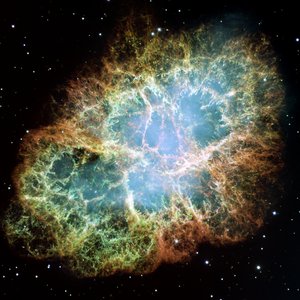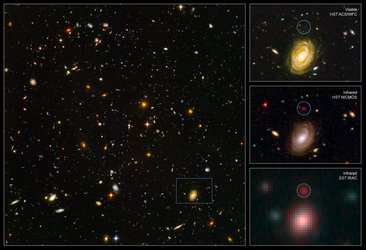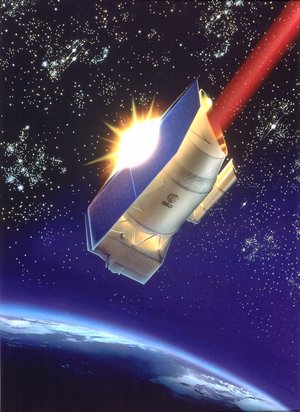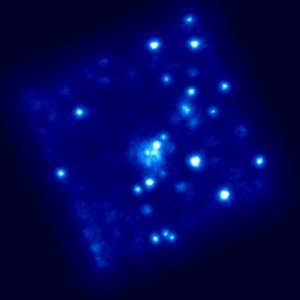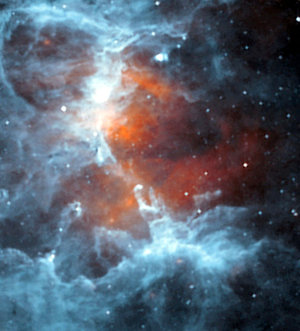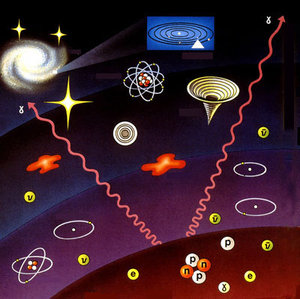'Weighing' the Dog Star's companion
An international team of astronomers has used the NASA/ESA Hubble Space Telescope to provide for the first time an accurate measurement of the weight of the nearest white dwarf, Sirius B, companion of Sirius A, the brightest star in the sky.
It turns out that Sirius’s companion, despite being smaller than the Earth, has a mass that is 98% that of our own Sun. White dwarfs are important to theories of both stellar and cosmological evolution.
The astronomers used Hubble to isolate the light from the white dwarf Sirius B. The new results allowed them to measure precisely the white dwarf’s mass based on how its intense gravitational field alters the wavelengths of light emitted by the star.
For many, it has always been a source of frustration that the nearest white dwarf star is buried in the glow of the brightest star in the nighttime sky. This burned-out stellar remnant is a faint companion of the brilliant blue-white Sirius or 'Dog Star', located in the winter constellation Canis Major. This is one of the nearest known stars to Earth at 8.6 light-years away.
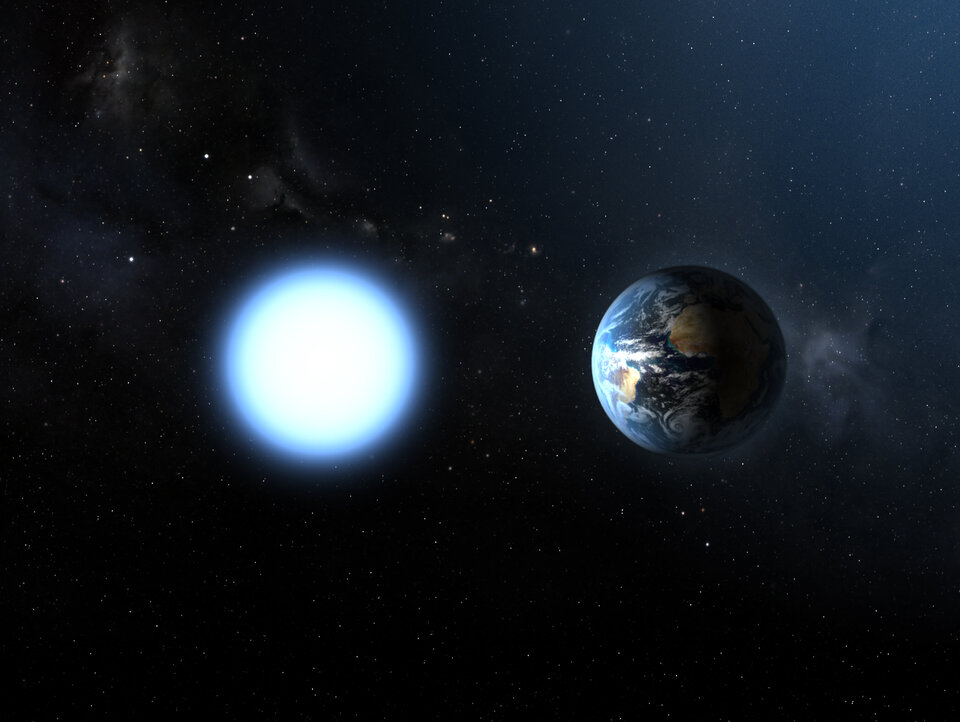
"Studying Sirius B has challenged astronomers for more than 140 years," said Martin Barstow, University of Leicester, UK, leader of the observing team.
"Only with Hubble have we at last been able to obtain the observations we need, uncontaminated by the light from Sirius, in order to measure its change in wavelengths."
Accurately determinations the masses of white dwarves are fundamentally important to understanding stellar evolution. Our Sun will eventually become a white dwarf. White dwarfs are also the source of Type Ia supernova explosions that are used to measure cosmological distances and the expansion rate of the Universe.
Measurements based on Type Ia supernovae are fundamental to understanding 'dark energy,' a dominant repulsive force stretching the Universe apart.
Also, the method used to determine the white dwarf’s mass relies on one of the key predictions of Einstein’s theory of General Relativity; that light loses energy when it attempts to escape the gravity of a compact star.
Sirius B has a diameter of 12 000 kilometres, less than the size of Earth, but is much denser. Its powerful gravitational field is 350 000 times greater than Earth's, meaning that a 68-kilogram person would weigh 25 million kilograms standing on its surface.
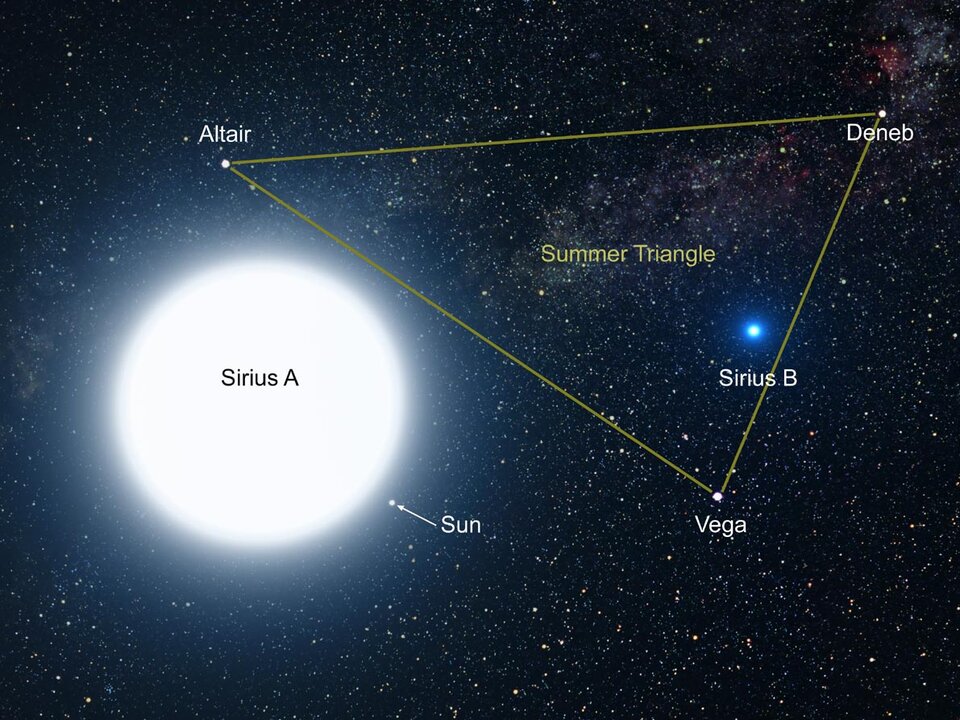
Light from the surface of the hot white dwarf has to climb out of this gravitational field and is stretched to longer, redder wavelengths of light in the process.
This effect, predicted by Einstein's theory of General Relativity in 1916, is called 'gravitational redshift', and is most easily seen in dense, massive, and hence compact objects whose intense gravitational fields warp space near their surfaces.
Based on the Hubble measurements of the redshift, the team found that Sirius B has a mass that is 98 percent that of our own Sun. Sirius itself has a mass of two times that of the Sun and a diameter of 2.4 million kilometres.
White dwarfs are the leftover remnants of stars similar to our Sun. They have exhausted their nuclear fuel sources and have collapsed down to a very small size. Despite being the brightest white dwarf known, Sirius B is about 10 000 times fainter than Sirius itself, making it difficult to study with telescopes on Earth because its light is swamped in the glare of its brighter companion.
Astronomers have long relied on a fundamental theoretical relationship between the mass of a white dwarf and its diameter. The theory predicts that the more massive a white dwarf, the smaller its diameter. The precise measurement of Sirius B's gravitational redshift allows an important observational test of this key relationship.
The Hubble observations have also refined the measurement of Sirius B’s surface temperature to be 25 000 degrees Celsius. Sirius itself has a surface temperature of 10 000 degrees Celsius.
Note to editors:
The Hubble Space Telescope is a project of international co-operation between ESA and NASA.
For more information:
Lars Lindberg Christensen
Hubble/ESA, Garching, Germany
Tel: +49 89 3200 6306
Mobile: +49 173 3872 621
E-mail: lars @ eso.org
Martin Barstow
University of Leicester
Tel: +44 1144 116 252 3492
Cell: +44 776 623 3362
E-mail: mab@star.le.ac.uk
Julia Maddock
PPARC Press Office
Tel +44 1793 442 094
E-mail: Julia.maddock @ pparc.ac.uk
Howard Bond
Space Telescope Science Institute, Baltimore, USA
Tel: +1 410 338 4718
E-mail: bond @ stsci.edu
Jay Holberg, Lunar Planetary Lab, Tucson, USA
Tel: +1 520 621 4571
E-mail: holberg @ argus.lpl.arizona.edu
The Hubble Space Telescope is a project of international cooperation between ESA and NASA.





